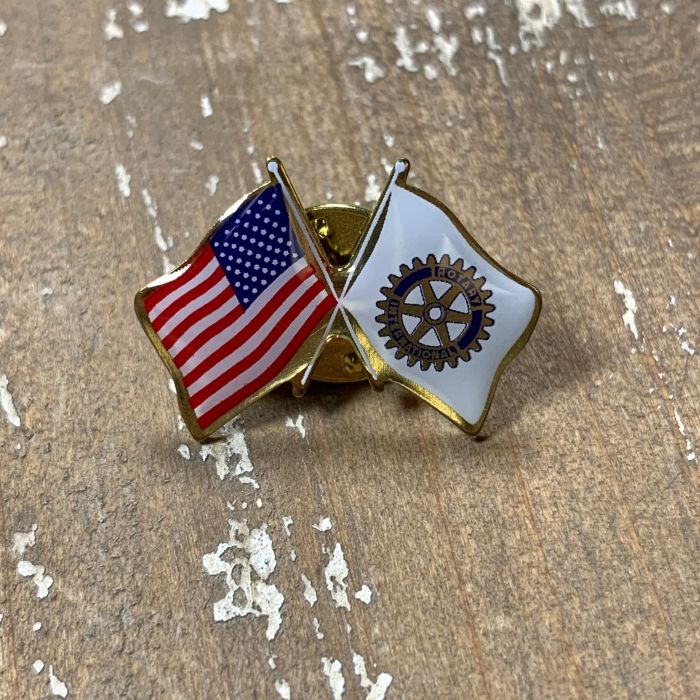Honoring Service: The Meaning and Tradition Behind U.S. Marine Lapel Pins
Introduction
The U.S. Marine Corps stands as one of the most revered branches of the United States Armed Forces. Known for its rigorous training, undying commitment, and valor in combat, the Marines epitomize the essence of dedication and sacrifice. Among the various symbols and tokens of appreciation that honor their service, U.S. Marine lapel pins hold a special place. These seemingly small items carry enormous significance, serving as both a badge of honor and a lasting memento of service. In this article, we delve into the meaning and tradition behind U.S. Marine lapel pins, uncovering why they are cherished by Marines and civilians alike.
Historical Significance
The Origins of military lapel pins
The tradition of wearing lapel pins to signify military service dates back to ancient times. Early warriors adorned themselves with medals and insignia that marked their rank and accomplishments. These symbols were not merely decorative; they conveyed a powerful message of bravery, honor, and dedication to one’s nation.
Evolution in the U.S. Military
In the United States, the concept of lapel pins gained prominence during World War I. As soldiers returned from the frontlines, they were awarded various insignia to recognize their service and achievements. The tradition expanded during World War II and subsequent conflicts, eventually becoming a permanent fixture in military culture. For Marines, lapel pins symbolize the values of honor, courage, and commitment that define their ethos.
Types of U.S. Marine Lapel Pins
Service and Recognition Pins
Service and recognition pins are perhaps the most common type of U.S. Marine lapel pins. These pins are awarded to Marines to commemorate various milestones in their careers. They mark years of service, participation in significant operations, and exceptional achievements. Each pin tells a unique story of dedication and sacrifice.
Unit and Battalion Pins
Unit and battalion pins are designed to represent specific Marine Corps units, battalions, or squads. These pins foster a sense of camaraderie and belonging among Marines, serving as a reminder of the close bonds formed during training and deployment. The designs often incorporate unit emblems, mottos, and colors, making them distinct and easily recognizable.
Commemorative and Memorial Pins
Commemorative and memorial pins are crafted to honor specific events, battles, or fallen comrades. These pins serve as enduring tributes to the sacrifices made by Marines throughout history. Whether celebrating the Marine Corps’ birthday or commemorating a significant battle, these pins help preserve the legacy of the Corps for future generations.
Symbolism and Design
Elements of Marine Lapel Pins
The design of U.S. Marine lapel pins is rich with symbolism. Key elements often include the Eagle, Globe, and Anchor (EGA)—the iconic emblem of the Marine Corps. The eagle symbolizes the United States, the globe represents worldwide service, and the anchor signifies the Corps’ naval heritage. Other common elements include the Marine Corps motto "Semper Fidelis" (Always Faithful), stars and stripes, and imagery of famous battles or landmarks.
Colors and Materials
The colors used in Marine lapel pins are carefully chosen to convey meaning and evoke pride. Red and gold are prevalent, representing valor and excellence, while blue signifies loyalty and fidelity. The materials used range from enamel to precious metals, each adding a layer of distinction to the pins.
The Role of Lapel Pins in Marine Culture
A Badge of Honor
For Marines, wearing a lapel pin is a badge of honor. It is a tangible reminder of their service and the values they uphold. The pride that comes with donning a Marine lapel pin is immeasurable, reflecting a deep connection to the Corps and its storied history.
Fostering Camaraderie
Lapel pins also play a crucial role in fostering camaraderie among Marines. Sharing stories about their pins, recounting the experiences they represent, and exchanging pins with fellow Marines create a sense of brotherhood and shared purpose. This tradition extends beyond active duty, as veterans continue to wear their lapel pins as a mark of lifelong membership in the Marine Corps family.
Public Recognition
When worn in public, Marine lapel pins generate recognition and respect from civilians. These pins serve as visible symbols of the sacrifices made by Marines, prompting expressions of gratitude from those who appreciate their service. In this way, lapel pins help bridge the gap between military and civilian life, fostering mutual understanding and appreciation.
How to Wear and Display Marine Lapel Pins
Proper Placement
The proper placement of lapel pins is important for maintaining the decorum and respect associated with them. Generally, lapel pins are worn on the left side of the chest, near the heart, to symbolize the personal commitment and sacrifice of the wearer. Specific guidelines may vary depending on the type of pin and the occasion, but the left side placement remains a consistent rule.
Displaying with Other Honors
Marines often have multiple pins representing different milestones and achievements. When wearing multiple pins, it is customary to arrange them in a manner that reflects their significance. Higher-ranking or more prestigious pins should be placed above or to the left of other pins.
Preservation and Care
To preserve the condition and integrity of lapel pins, it is important to store them properly. Keeping them in a display case or shadow box not only protects the pins from damage but also allows for a dignified presentation of one’s service and accomplishments.
Conclusion
U.S. Marine lapel pins are far more than mere accessories; they are potent symbols of honor, sacrifice, and unity. Each pin tells a story, serving as a tangible reminder of the values and experiences that define the Marine Corps. From commemorating years of service to honoring fallen comrades, these pins play a vital role in preserving the legacy and traditions of the Marines. As we move forward in 2024 and beyond, the significance of Marine lapel pins will continue to resonate, inspiring new generations of Marines and civilians alike.
For those looking to learn more or acquire a pin to honor a Marine, check out the variety and significance of us marine lapel pins.
FAQs
What is the significance of the Eagle, Globe, and Anchor on Marine lapel pins?
The Eagle, Globe, and Anchor (EGA) is the emblem of the Marine Corps. The eagle represents the United States, the globe symbolizes worldwide service, and the anchor signifies the Marine Corps’ naval heritage.
Where should I wear my Marine lapel pin?
Marine lapel pins are typically worn on the left side of the chest, near the heart, to symbolize the personal commitment and sacrifice of the wearer.
Can I wear multiple Marine lapel pins?
Yes, you can wear multiple Marine lapel pins. It is customary to arrange them in an order that reflects their significance, with higher-ranking or more prestigious pins placed above or to the left of other pins.
How do I preserve and care for my Marine lapel pins?
To preserve the condition of your lapel pins, store them in a display case or shadow box. This protects them from damage and allows for a dignified presentation.
Are Marine lapel pins only for active duty personnel?
No, Marine lapel pins are worn by both active duty personnel and veterans. They serve as a lifelong badge of honor for anyone who has served in the Marine Corps.
Whether you are a Marine wanting to commemorate your service or a civilian wishing to honor a Marine, obtaining a custom lapel pin quote is a great way to start.






